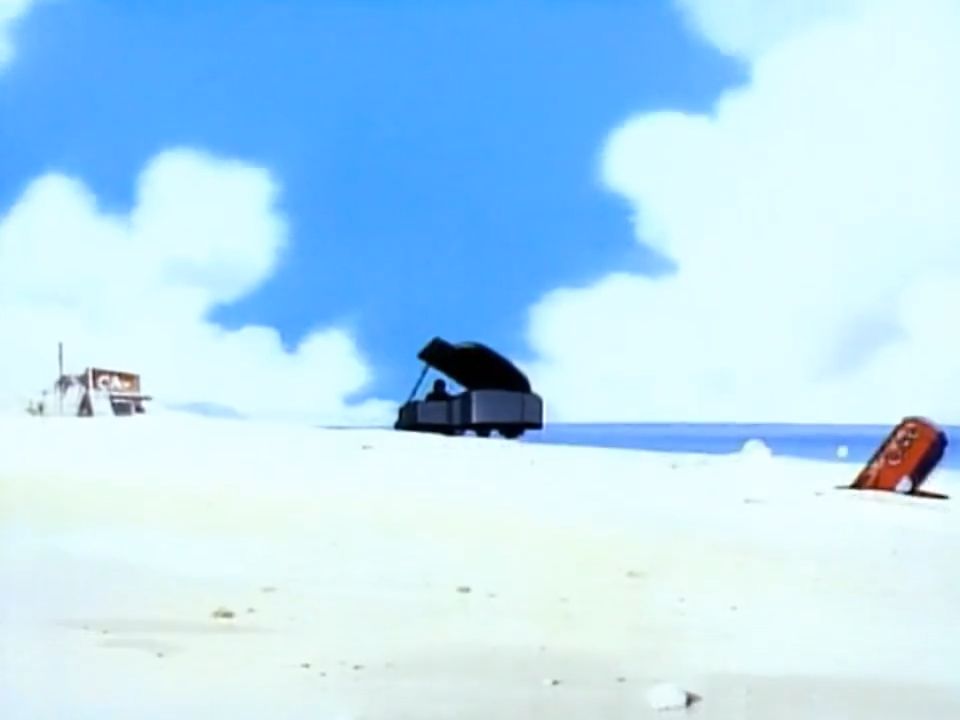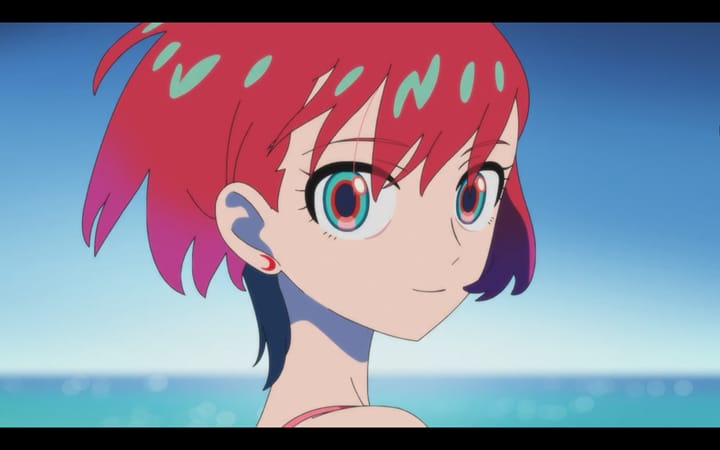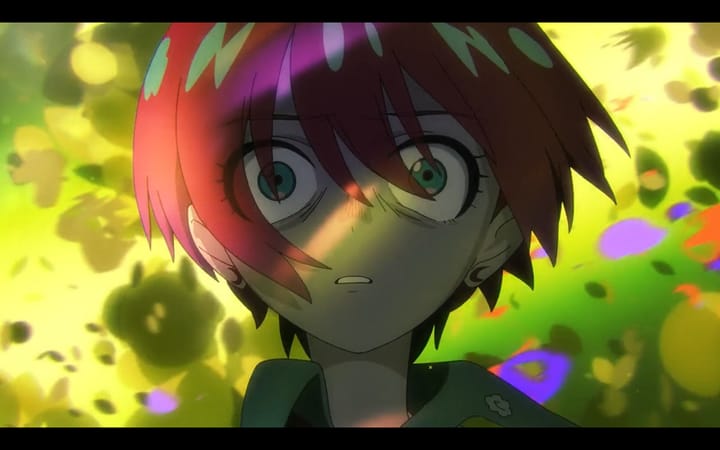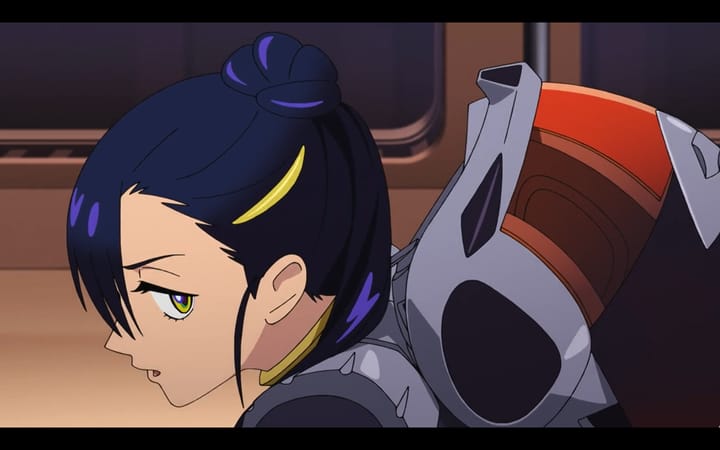Long Live the Ancestors!: Gosenzo-sama Banbanzai
What distinguishes Banbanzai is that despite its degree of difficulty, despite its many counterintuitive or even abrasive creative choices, the staff made it anyway.
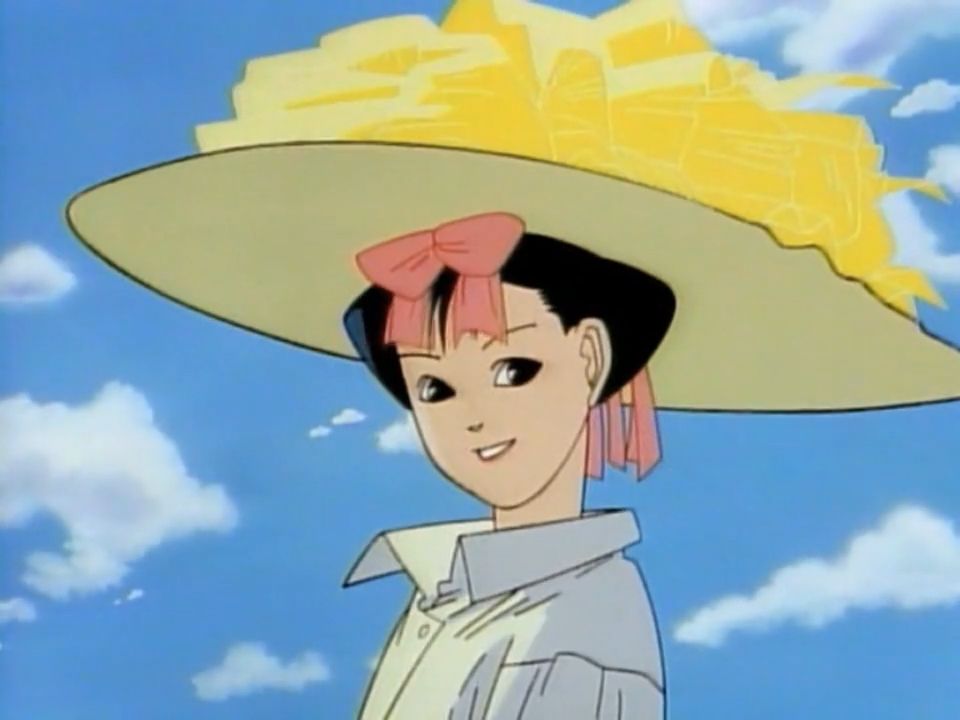
Welcome to ANIWIRE! This week we’re discussing Gosenzo-sama Banbanzai, a 1989 series that stretches the medium of anime far out of its comfort zone. Before that, though, here’s the news from the past week.
News
- Nippon TV is acquiring Studio Ghibli. They’ve had a relationship with the studio for years, but this change will definitely shape Ghibli’s future post-Miyazaki (if it has one, at this point.)
- There will be a second season of My Happy Marriage! Excellent news.
- In less excellent news, the last three episodes of Zom 100 of the Dead are on indefinite hiatus. RIP.
- A new trailer was released for the upcoming film finale of Haikyuu!!, reuniting many of the show’s original staff from earlier seasons. Some friends of mine are nervous about whether anything short of a full TV series could do justice to the remainder of Haikyuu!! Post The Last Slam Dunk, though, I’m inclined to believe in miracles.
- As part of the ongoing consolidation of the anime industry, online retailer Right Stuf is being fully absorbed into Crunchyroll. [Disclaimer: I’ve been published by Crunchyroll News.]
Bookmarks
- For Slash Film, Scooby-Doo superfan Valerie Ettenhofer stitched together an oral history regarding the classic direct-to-DVD film Scooby-Doo on Zombie Island.
- For Anime News Network, Christopher Farris wrote about the history of Digimon’s “prodigious” English dub.
- Meanwhile, Lynzee Loveridge interviewed Heavenly Delusion manga artist Masakazu Ishiguro. As somebody who’s been rewatching the series with friends, there are some great answers in here as well as some very frustrating ones. Just about what you’d expect from an alternatively great and frustrating series!
- Another Comics Journal translation of manga critic Natsume Fusanosuke, this time tackling a collection of early short stories by Akira’s Katsuhiro Otomo.
- At Tsundoku Diving, Baxter wrote about the live-action TV drama Atami no Sousakan. I’d never heard about this one before seeing Baxter talk about it on social media, but it looks great!
- Chloe Maeval once again interviewed legendary comics artist Eddie Campbell, this time for The Gutter Review.
AMV of the Week
Here’s “Clubbin’ with Lupin” by PixelBlended Studios.
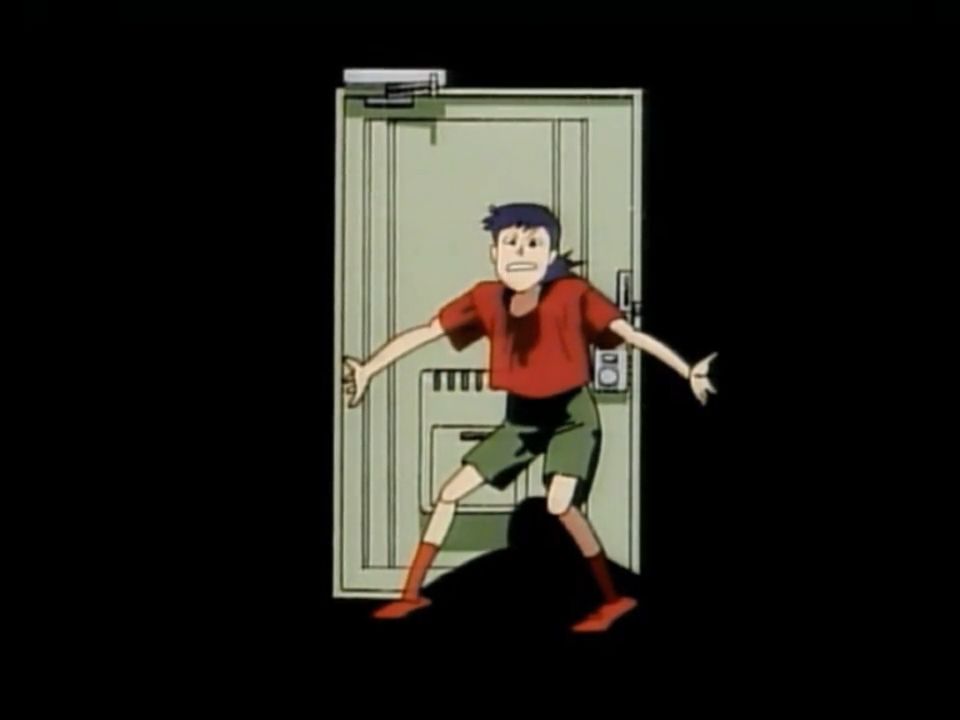
You’ve probably never heard of Gosenzo-sama Banbanzai. It’s never been licensed in English. In Japan it was only ever released on VHS and DVD. Its director, “anime auteur” Mamoru Oshii is better known these days for science fiction films like Ghost in the Shell and Patlabor 2. The definitive book on Oshii in English, Brian Ruh’s Stray Dog of Anime, briefly notes Banbanzai in the “Filmography” section but otherwise ignores it. It’s fallen to hardcore animation bloggers to advocate for the show’s importance. Why write about Banbanzai, then, if it’s so obscure? Well, why not?
Gosenzo-sama Banbanzai, which translates to “Long Live the Ancestors,” was born of decadence. Mamoru Oshii had spent the past four years directing Urusei Yatsura, one of the most popular animated comedies of the decade. Urusei Yatsura was technically about a teenage boy and his capricious alien bride, but that premise could be massaged into just about everything. Oshii and his crew spun manga artist Rumiko Takahashi’s source material into pop culture spoof, romantic drama and even a murder mystery. The capstone of Oshii’s time on the series, the film Beautiful Dreamer, was much like if Christopher Nolan had developed Inception as The Simpsons Movie and somehow gotten away with it.
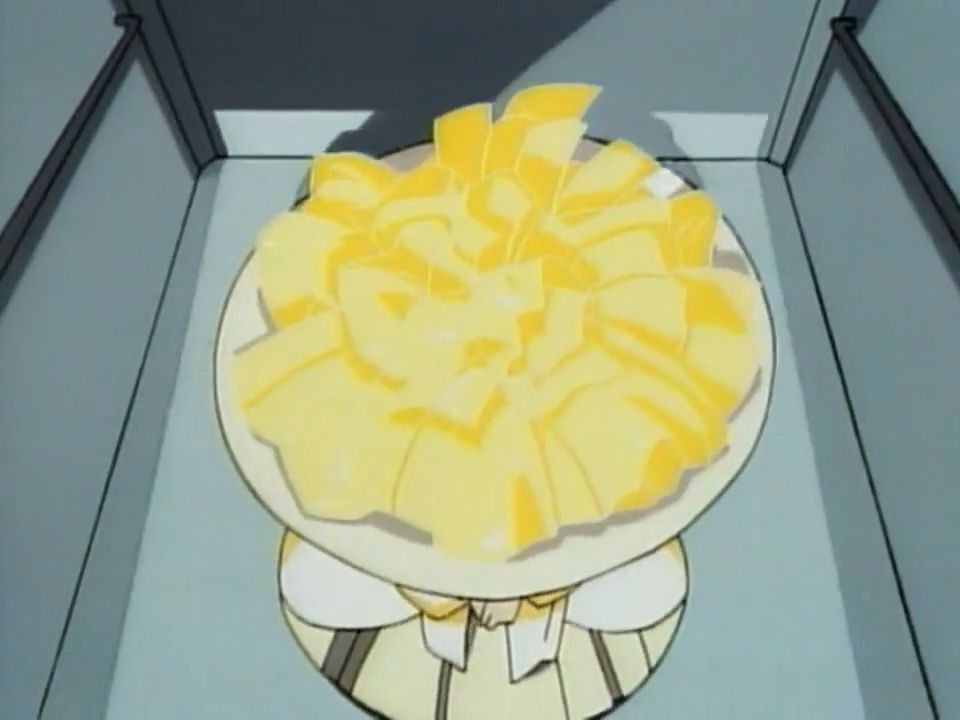
But Urusei Yatsura was an adaptation, not an original work. The animators could not abandon the expectations of Takahashi’s readers no matter how far they pushed the envelope. Beautiful Dreamer transformed this frustration from subtext into text by having the characters question their surreal unchanging world. Oshii left the production staff of Urusei Yatsura soon after the film’s release. He wanted to make something original that would push the medium forward. The solution lay in a new release format: original video animation, or OVAs.
OVAs allowed studios and producers to skip theaters entirely and pitch their work directly to the fans. While most ran for just a few episodes, many of them (such as Gunbuster, Legend of the Galactic Heroes and Megazone 23) are among the most beloved anime productions of the 1980s. Oshii himself directed the first “official” OVA, Dallos, in 1983. He returned to the format after leaving Urusei Yatsura to direct 1985’s Angel’s Egg, a collaboration with artist Yoshitaka Amano. Angel’s Egg was surreal, slow-paced and defiantly noncommercial. Audiences at the time rejected it. It took until Oshii’s involvement in the Patlabor franchise, starting with its 1988 OVA, for his career to build momentum again.
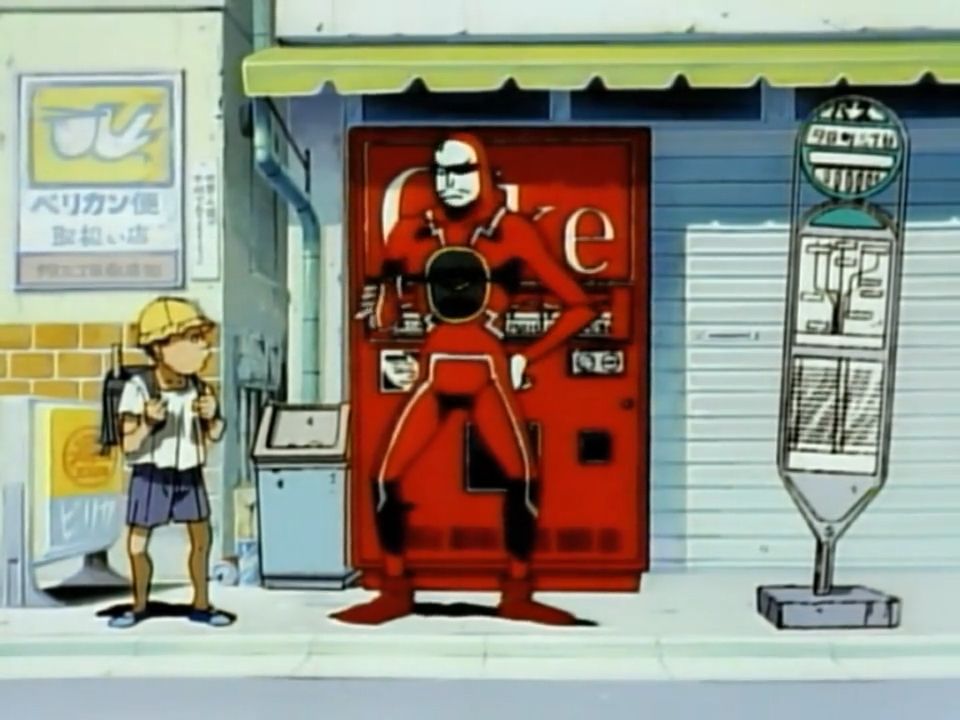
It’s possible to thread together Dallos, Angel’s Egg and Patlabor with Oshii’s later science fiction films in the 1990s. Gosenzo-sama Banbanzai complicates that reading because, despite its trademark Oshii opacity, it is the total opposite of what you might expect from the future director of Ghost in the Shell. Gosenzo-sama Banbanzai is funny and caustic. It’s a time travel story where the time machine is a big yellow blimp, and the time traveler may or may not be lying. The characters monologue directly at the audience and inhabit a world of fake stage sets. Look closely and you’ll see that their limbs are articulated, as if they were puppets. If animation as a medium seeks to conjure the illusion of life, Gosenzo-sama Banbanzai reminds its audience that every frame is fake, fake, fake.
I don’t have the expertise to comment on how Gosenzo-sama Banbanzai transformed the medium of animation. I recommend reading Matteo Wattzky’s write-up in Animetudes or Lilly’s blog post at Timber Owls. What I am qualified to say is that Gosenzo-sama Banbanzai is a six-episode roast of Urusei Yatsura. Just like its predecessor, it’s the story of an “invader” that comes to visit an ordinary Japanese family. Lecherous teenage boy Inumaru Yomota is voiced by Toshio Furukawa, who previously voiced the lecherous teenage boy Ateru in Urusei Yatsura. His father Kinekuni is voiced by Kenichi Ogata, who played Ateru’s father in Urusei Yatsura. Most importantly, Inumaru’s mother Tamiko is voiced by Machiko Washio, whose Urusei Yatsura character Sakura played a key role in Beautiful Dreamer.

Beautiful Dreamer played with the notion that the world of Urusei Yatsura was nothing but a dreamland meant to satisfy the desires of Lum and Ataru. Gosenzo-sama Banbanzai goes even further by suggesting that the logic of anime and manga is laughable to begin with. Maroko Yomota isn’t just a beautiful young woman that steals Inumaru’s heart. She’s his granddaughter, making any relationship between her and the Yomota family incestuous–but Inumaru and his father Kinekuni lust after her anyway.
When Tamiko skips town to discover Maroko’s secret, she finds proof that Maroko has spent the past several years infiltrating families and then tearing them apart from the inside. Surely that proves Maroko’s a fake? Nope: just after Tamiko makes her case, a shocking incident unites the Yomotas and leads them to accept Maroko as the real thing, simply because it’s easier than the alternative.

Every episode of Gosenzo-sama Banbanzai starts with a short segment about birds, how they mate and how they treat their young. These birds are successful, the narrator says, because they follow nature's laws. The Yomotas fail because they defy the laws of nature to satisfy their own hunger. But then, the show suggests, weren’t the problems there from the start? The Yomotas are very unhappy at the end of the series, but they aren’t much better off at the beginning. From start to end, Inumaru longs for something he can’t have. Another show might give him that thing at the end to ease the viewer’s heart. Gosenzo-sama Banbanzai asks: why?
To be honest, though, I could take or leave the themes of Gosenzo-sama Banbanzai. What impresses me more is the OVA’s sheer sensorial affect. There’s a sequence in the fourth episode where Bunmei Miroto, a time cop (?) in pursuit of Maroko, plays the piano on top of a pile of Coke cans at the beach. Bunmei’s entire body emotes as he plays the keys and the tide comes in and out. His mouth moves realistically to match the lyrics of the song.
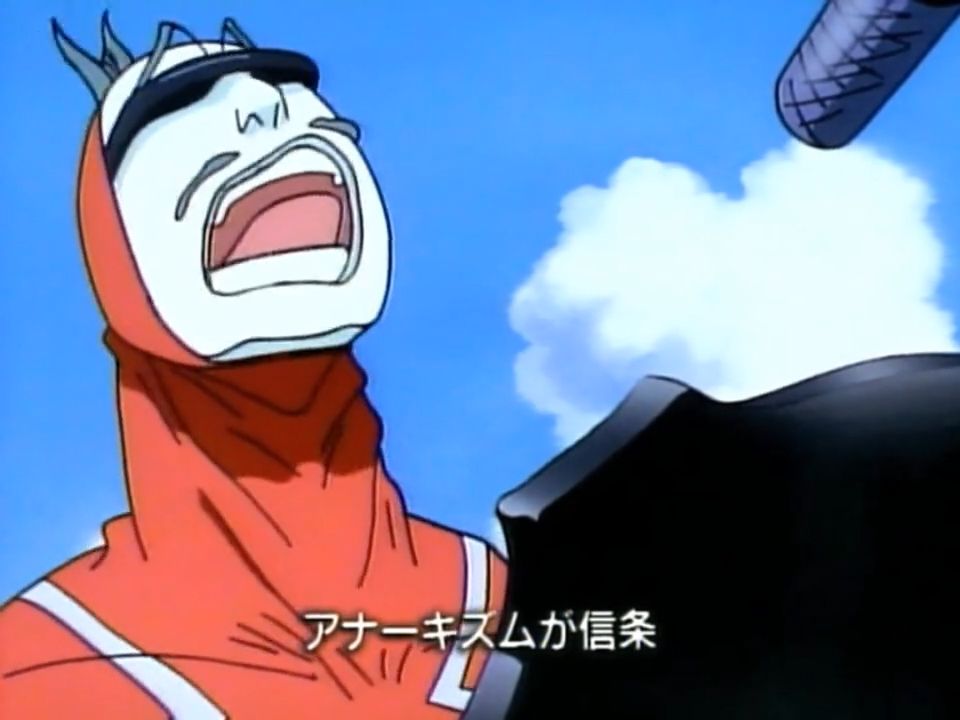
This is not a typical anime piano performance, which more often than not consists of somebody sitting on a bench and hitting the keys. This is the kind of sincere musical performance you’d see in a Disney film. Instead of a princess or an animal solemnly singing about their dreams, though, you have a middle-aged man in a rubber suit giving the performance of his life in a place where you would never, ever bring a real piano.
Gosenzo-sama Banbanzai could have been a stage play or a live action film. Real life actors could have played the roles of Inumaru, Maroko and Tamiko. Real stage lighting could have been used to situate them within each scene. If that was the case, though, the piano scene likely would have been impossible. What distinguishes Banbanzai is that despite its degree of difficulty, despite its many counterintuitive or even abrasive creative choices, the staff made it anyway. Character designer and animation director Satoru Utsunomiya made designs that could be made to move realistically despite being not at all photorealistic. Their shadows were carefully drawn to account for light sources in every scene. This was a lot of work. But: why not?
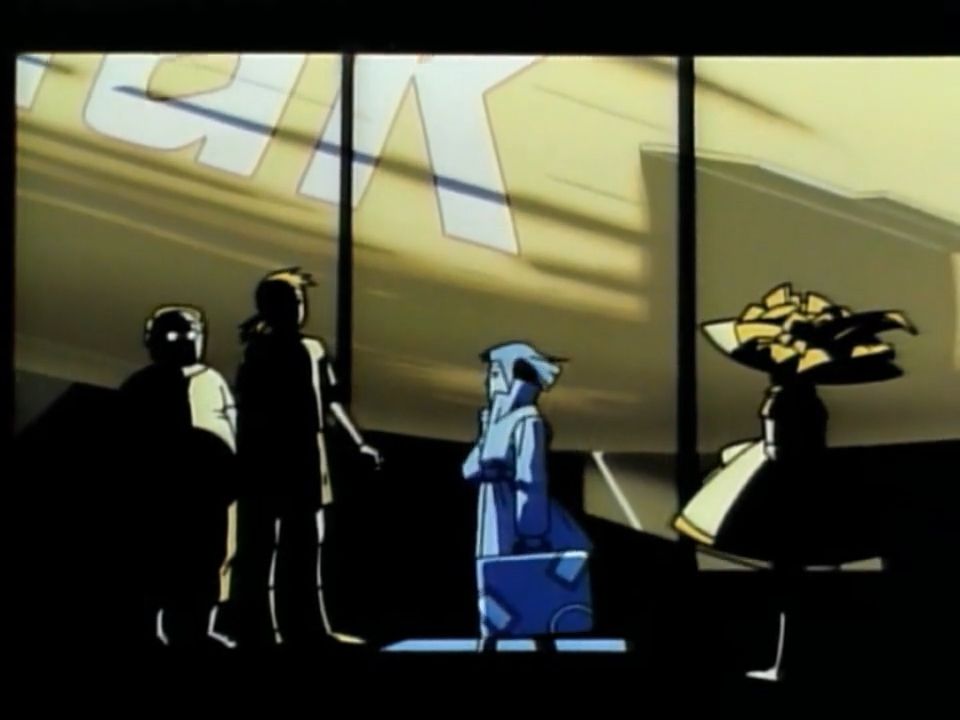
One of my favorite touches are the tableaus that end each episode. Director Osamu Dezaki experimented with something similar with “postcard memories,” pastel freeze-frames marking important moments. Postcard memories are a beloved, efficient standby of the anime industry. By their nature, though, they can’t show movement. But Gosenzo-sama Banbanzai has it both ways. The first episode stinger depicts Tamiko slowly walking in place as she sinks into the floor, her blue shadow contrasting the giant yellow blimp rising behind her. She's set off by the silhouettes of her family standing around her, creating an image with the punch of a postcard memory but the dynamism of an animated sequence. It’s such a great trick I’m surprised that nobody else has bothered to steal it for their own projects.
Gosenzo-sama Banbanzai was only made because of a historic convergence: the popularity of OVAs, Studio Pierrot’s desire to commemorate itself and the idiosyncratic skills of its staff. They made choices not because they were necessarily profitable but because they were interesting. Many of today’s animators are stuck in Oshii’s former position, finding new ways to translate somebody else’s vision to the screen. The Gosenzo-sama Banbanzai of today would be a three minute EVE music video instead of six half-hour episodes. Don’t get me wrong–I love music videos! But what would it look like if these folks were allowed to go truly apeshit for nearly three hours? Maybe it’d be something like Gosenzo-sama Banbanzai, beautiful and insufferable.
